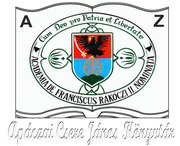Please use this identifier to cite or link to this item:
https://dspace.kmf.uz.ua/jspui/handle/123456789/4638Full metadata record
| DC Field | Value | Language |
|---|---|---|
| dc.contributor.author | Sikora Emőke | hu |
| dc.contributor.author | Koncz-Horváth Dániel | hu |
| dc.contributor.author | Muránszky Gábor | hu |
| dc.contributor.author | Kristály Ferenc | hu |
| dc.contributor.author | Fiser Béla | hu |
| dc.contributor.author | Bela Fiser | en |
| dc.contributor.author | Фішер Бейло | uk |
| dc.contributor.author | Viskolcz Béla | hu |
| dc.contributor.author | Vanyorek László | hu |
| dc.date.accessioned | 2025-01-29T12:54:32Z | - |
| dc.date.available | 2025-01-29T12:54:32Z | - |
| dc.date.issued | 2021 | - |
| dc.identifier.citation | In International Journal of Molecular Sciences. 2021. Volume 22., Issue 21. 13 p. | en |
| dc.identifier.issn | 1661-6596 (Print) | - |
| dc.identifier.issn | 1422-0067 (Online) | - |
| dc.identifier.other | DOI: https://doi.org/10.3390/ijms222111846 | - |
| dc.identifier.uri | https://dspace.kmf.uz.ua/jspui/handle/123456789/4638 | - |
| dc.description.abstract | Abstract. Cellulose grains were carbonized and applied as catalyst supports for nickel- and magnetitepromoted bimetallic palladium- and platinum-containing catalysts. The bimetallic spherical aggregates of Pd and Pt particles were created to enhance the synergistic effect among the precious metals during catalytic processes. As a first step, the cellulose bead-based supports were impregnated by nitrate salts of nickel and iron and carbonized at 973 K. After this step, the nickel was in an elemental state, while the iron was in a magnetite form in the corresponding supports. Then, Pd and Pt particles were deposited onto the supports and the catalyst surface; precious metal nanoparticles (10–20 nm) were clustered inside spherical aggregated particles 500–600 nm in size. The final bimetallic catalysts (i.e., Pd–Pt/CCB, Pd–Pt/Ni–CCB, and Pd–Pt/Fe3O4–CCB) were tested in hydrogenation of chlorate ions in the aqueous phase. For the nickel-promoted Pd–Pt catalyst, a >99% chlorate conversion was reached after 45 min at 80 ◦C. In contrast, the magnetite-promoted sample reached an 84.6% chlorate conversion after 3 h. Reuse tests were also carried out with the catalysts, and in the case of Pd–Pt/Ni–CCB after five cycles, the catalytic activity only decreased by ~7% which proves the stability of the system. | en |
| dc.description.sponsorship | This research was funded by the European Regional Development Fund, grant number the GINOP-2.3.4-15-2016-00004. The APC was funded by the University of Miskolc. | en |
| dc.language.iso | en | en |
| dc.publisher | MDPI | en |
| dc.relation.ispartofseries | ;Volume 22., Issue 21. | - |
| dc.rights | Attribution-NonCommercial-NoDerivs 3.0 United States | * |
| dc.rights.uri | http://creativecommons.org/licenses/by-nc-nd/3.0/us/ | * |
| dc.subject | Pd–Pt clusters | en |
| dc.subject | chlorate reduction | en |
| dc.subject | magnetite | en |
| dc.title | Development of Nickel- and Magnetite-Promoted Carbonized Cellulose Bead-Supported Bimetallic Pd–Pt Catalysts for Hydrogenation of Chlorate Ions in Aqueous Solution | en |
| dc.type | dc.type.collaborative | en |
| Appears in Collections: | Fiser Béla | |
Files in This Item:
| File | Description | Size | Format | |
|---|---|---|---|---|
| Fiser_et_al_Development_of_Nickel_2021.pdf | In International Journal of Molecular Sciences. 2021. Volume 22., Issue 21. 13 p. | 2.75 MB | Adobe PDF | View/Open |
This item is licensed under a Creative Commons License





